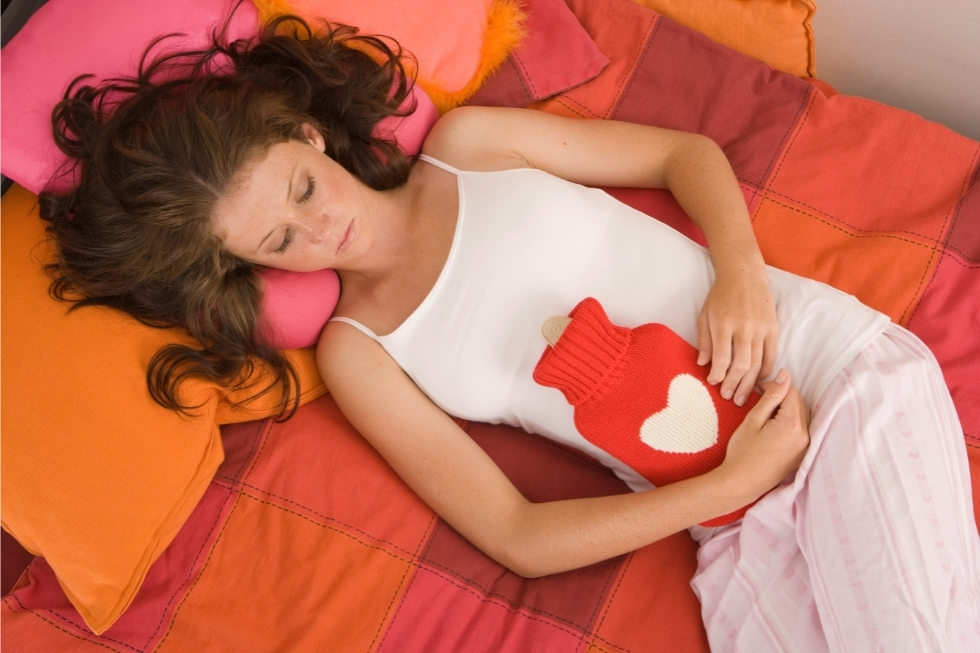Cramps, pain and discomfort associated with the menstrual cycle affect, more or less intensely, some 70% of teenagers and young women (aged 15-25) and roughly 25% of adult women.
Symptoms range from painful cramps in the lower abdomen, which can extend to the lower part of the back and to the legs, often along with nausea, dizziness, excessive sweating and diarrhoea. Painful symptoms can appear in the days preceding the period or concurrently with the period itself and sometimes the pain is associated with heavy menstrual bleeding. Women suffering from acute dysmenorrhea clearly have serious problems living with these symptoms when they are part of their everyday life routine, as recent studies confirm.
Dysmenorrhea is quite a problem for the women who suffer from it, causing nine days of absenteeism a year (from work or study) and productivity loss, as revealed by a study published in the British Medical Journal. Consider that, in many cases, such a problem could be avoided or greatly reduced if doctors were a little more careful and if patients were less willing to simply accept the problem.
The survey, conducted in the Netherlands, involved almost 33,000 females aged 15-45 years. The participants were asked to evaluate how often they were forced to stay home because of period pain and how often they experienced difficulties, still working or studying despite the strong discomfort associated with the menstrual cycle. The results speak for themselves: the participants reported, on average, almost 1.5 days of absenteeism from work per year and almost nine days of lost productivity due to presenteeism (where the pain makes all efforts useless). Furthermore, the study clearly reveals that presenteeism persists in the face of the problem: only 14% of the participants calls in sick when they have strong period pain, while 80% finds that carrying on with everyday life is the rule, even when period pain is particularly intense.
Considering that dysmenorrhea is very common throughout adolescence, one can easily imagine that the symptoms can severely compromise the paramount activity of adolescent girls: studying. Indeed, an Australian research has certified that 20% of some 20,000 young women interviewed said they skipped a few days at school or university because of menstrual pain, and 41% of them claimed they find it hard to concentrate during the menstrual cycle.
Despite such data, very few women turn to their GP to treat dysmenorrhea. That’s a mistake, because while it is normal to experience some sort of pain during the period, experts assure it should never actually hinder daily activities. When it does happen, women should seek an expert’s advice. Specific treatments do exist, but they must be properly evaluated by the gynaecologist, depending on the patient.
The most common treatments include the contraceptive pill and NSAIDs (Nonsteroidal Anti-Inflammatory Drugs, such as ibuprofen) but new, promising treatments are now available. For example, physiotherapy offers some solutions: there is evidence that heat (administered via adhesive heat patches), electrostimulators and yoga are effective. Plus, a number of studies have confirmed that physical exercise has very beneficial effects on period pain (https://www.idontwait.net/running-on-the-treadmill-can-ease-period-pain/). A British and New Zealand study has tested the effects of aerobic exercise (running on the treadmill) on 70 women affected by dysmenorrhea, proving that period pain can go down as much as 20 points (on a scale ranging from 0 to 100) in just four weeks, and that these results last for the seven following months.
Bottom line: coexisting with period pain is not the right choice. You’re better off running away from it.

Recent Comments